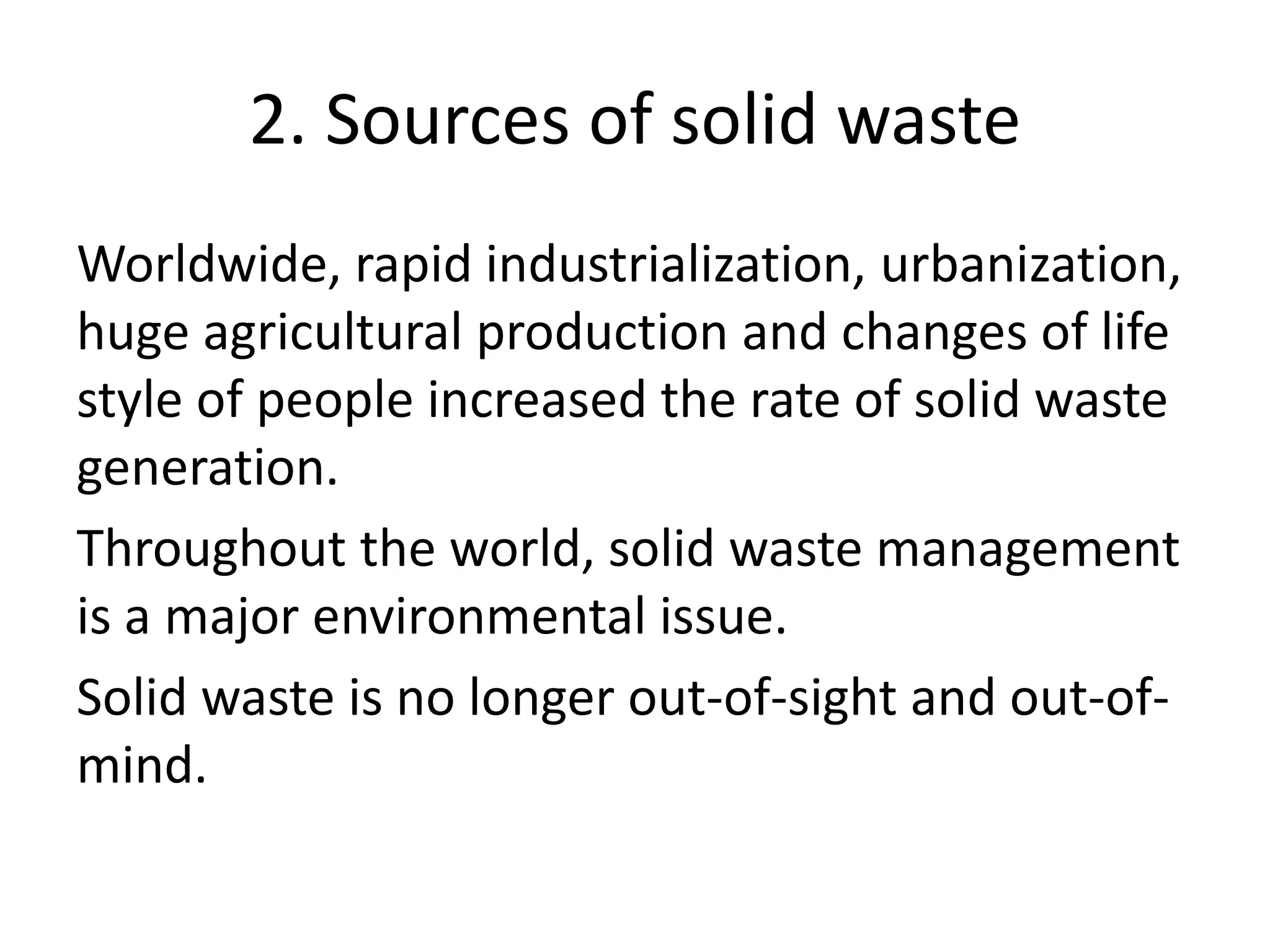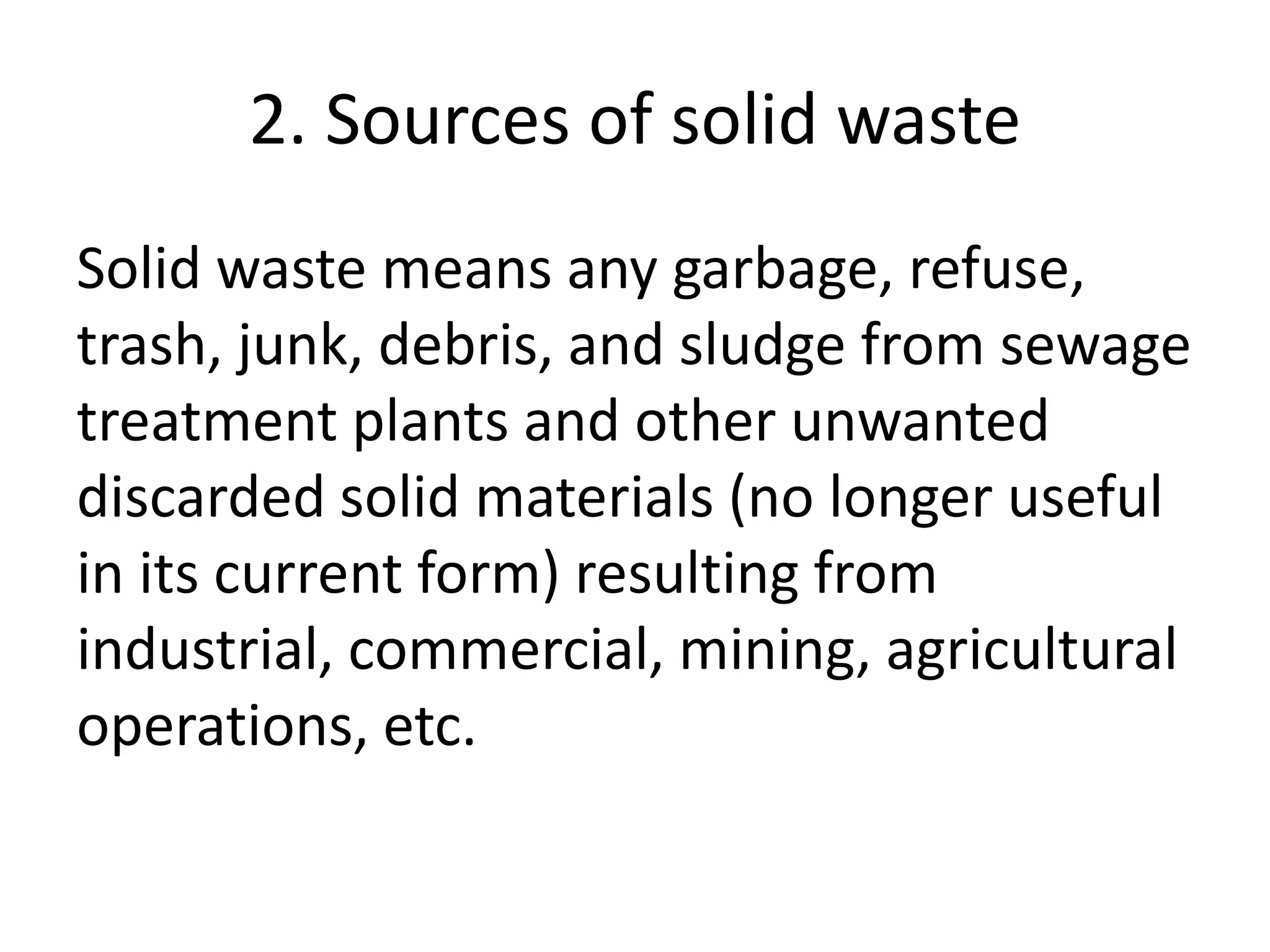Rapid industrialization and changes in lifestyle have increased solid waste generation worldwide. Solid waste comes from various domestic, industrial, and hazardous sources and poses environmental and health risks if not properly managed. Domestic solid waste includes materials from households while industrial waste varies depending on the industrial activity. Hazardous waste can be physical, chemical, or biological hazards and requires special care in storage, transport, and disposal. Medical waste and e-waste are particular types of hazardous waste that contain harmful materials if not properly disposed of and can pollute the environment and harm human health.

















































